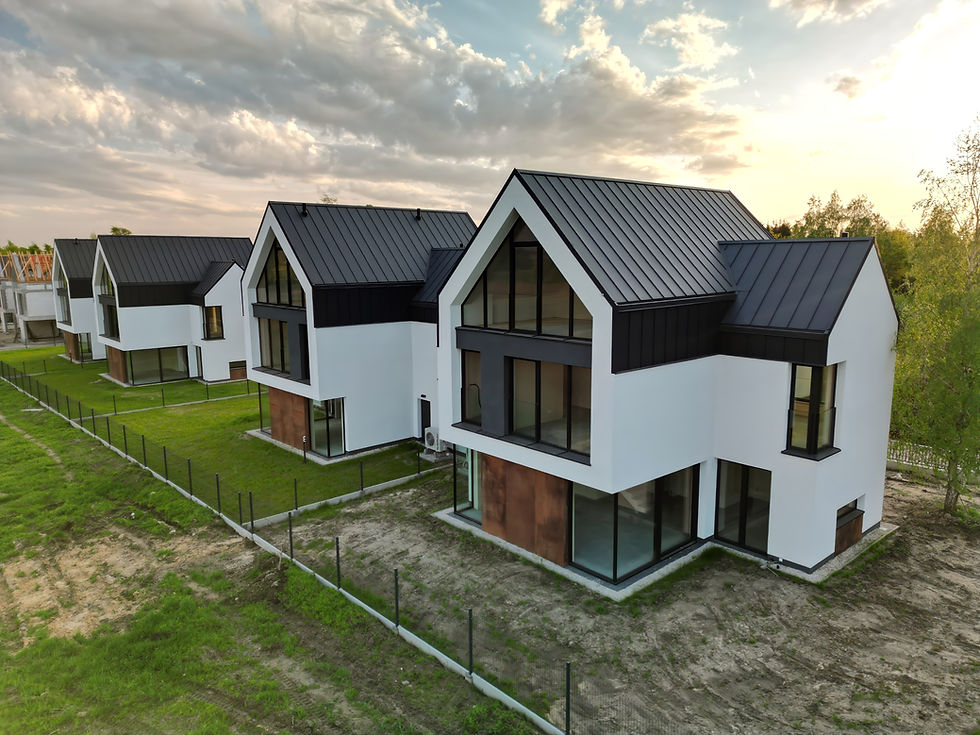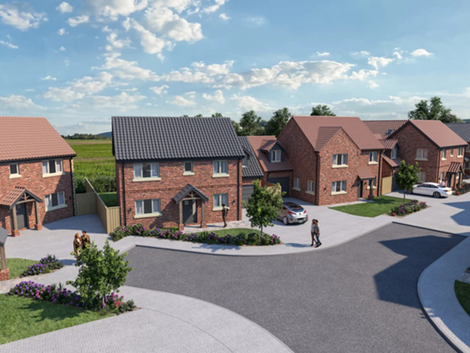SuDS-led drainage strategy designed for adoption and ecological gain
A Norfolk residential drainage scheme incorporating permeable surfaces, green roofs, and rain gardens to manage stormwater and support long-term sustainability.

%20Strategy%20(7)_edited.png)
Permeable paving
%20Strategy%20(7)_edited.png)
Green roofs
%20Strategy%20(7)_edited.png)
Rain gardens
What made this project stand out was the opportunity to embed sustainability from day one - not as an add-on, but as the backbone of the design. By aligning SuDS with adoptable standards and incorporating features like rain gardens and permeable paving, we delivered a system that’s both robust and environmentally responsible.
Ben Norman
Civil Engineer
Green View is a 19-home development where sustainable drainage has been integrated from the outset to minimise surface water runoff and enhance site ecology.
Our engineers developed a SuDS-led drainage strategy directing water to high soakage areas, reducing reliance on conventional systems. The approach includes permeable pavements, green roofs, and rain gardens, which provide both stormwater attenuation and biodiversity benefits.
The entire drainage design meets adoption standards: surface water systems are designed for Section 104 adoption, access roads for Section 38, and private plot drainage complies with BS8301 and Building Regulations. Full technical approval was secured pre-construction to ensure seamless delivery and long-term resilience.
This project demonstrates how sustainable drainage can meet adoption requirements while delivering environmental value and flood resilience - a core principle of REFEA’s civil engineering ethos.

Focus Areas
REFEA’s work is guided by six core principles that drive sustainable structural and civil engineering - turning practical design decisions into low-carbon outcomes across East Anglia.
Reuse First
Prioritising existing structures and materials to reduce waste and embodied carbon.

Early Design Collaboration
Involving engineers early to embed sustainability from concept to construction.

Low-Carbon Materials
Specifying materials with lower embodied carbon and designing for material efficiency.

Circular Design Thinking
Designing for adaptability, longevity, and future reuse from the outset.
%20Strategy%20(3)-min.png)
Integrated Drainage Solutions
Embedding SuDS into civil engineering for sustainable, climate-resilient developments.

Practical Sustainability
Delivering buildable, cost-conscious solutions that meet real environmental targets.

Sustainable
structures

east anglia
As structural engineers, we have a unique opportunity to influence how the built environment responds to the climate crisis. Reuse isn't just about saving materials - it's about rethinking value, preserving what works, and designing with long-term resilience in mind. Through REFEA, we hope to make reuse a more practical and achievable option on projects across East Anglia by sharing knowledge, highlighting viable approaches, and supporting early-stage design decisions.
Mark Weston
Structural Engineer, JMS Engineers
Knowledge is key to sustainable change. Explore our latest insights and technical resources:

Path to a Low-Carbon Built Environment
The built environment contributes nearly 40% of global carbon emissions, much of it through construction and materials. In East Anglia, reducing embodied carbon is critical to meeting sustainability goals. By reusing structures, designing efficiently, and integrating low-impact civil solutions, we can reshape how the region builds - and lead the way towards a net zero future.


%20Strategy%20(1)_edited.png)













